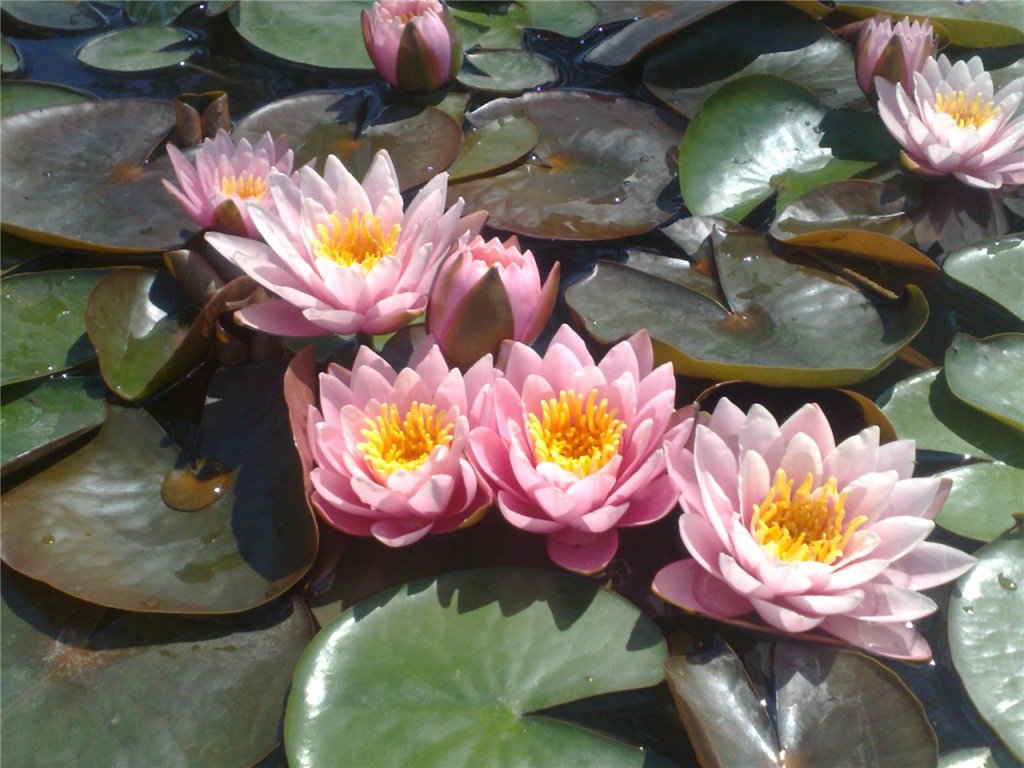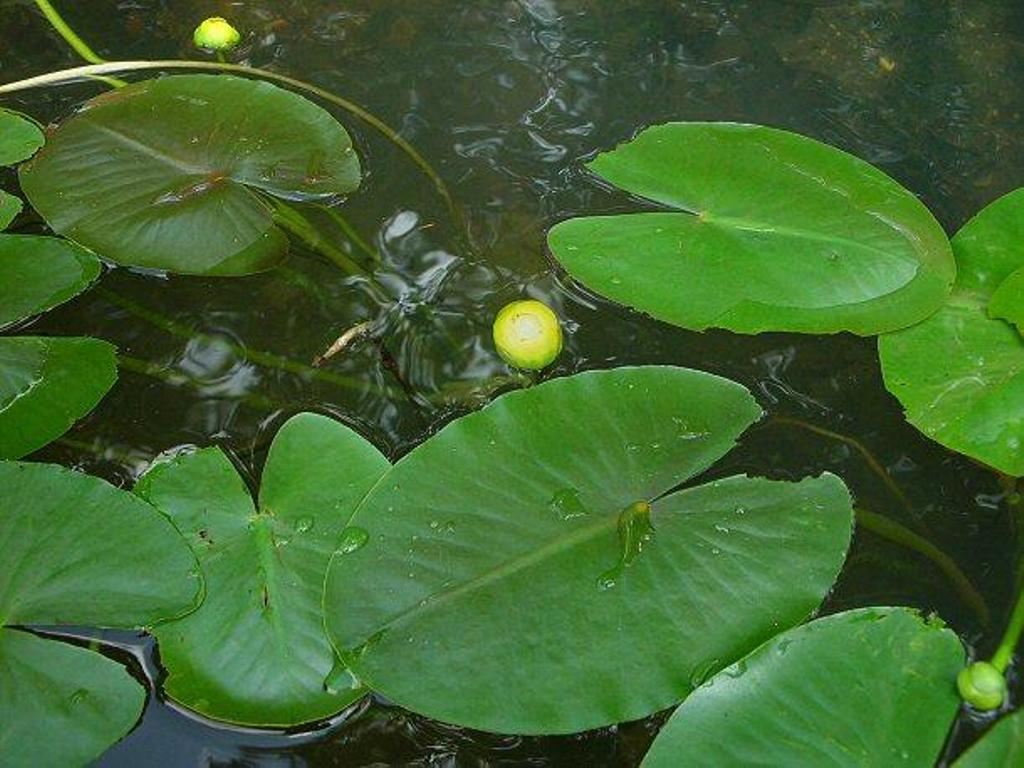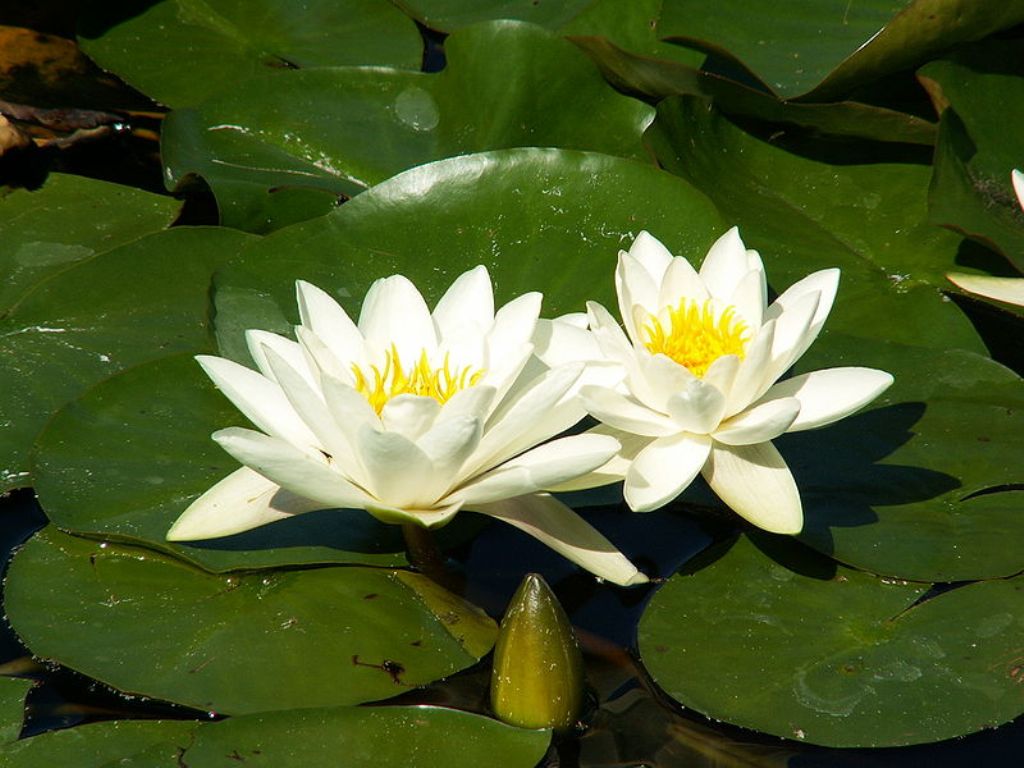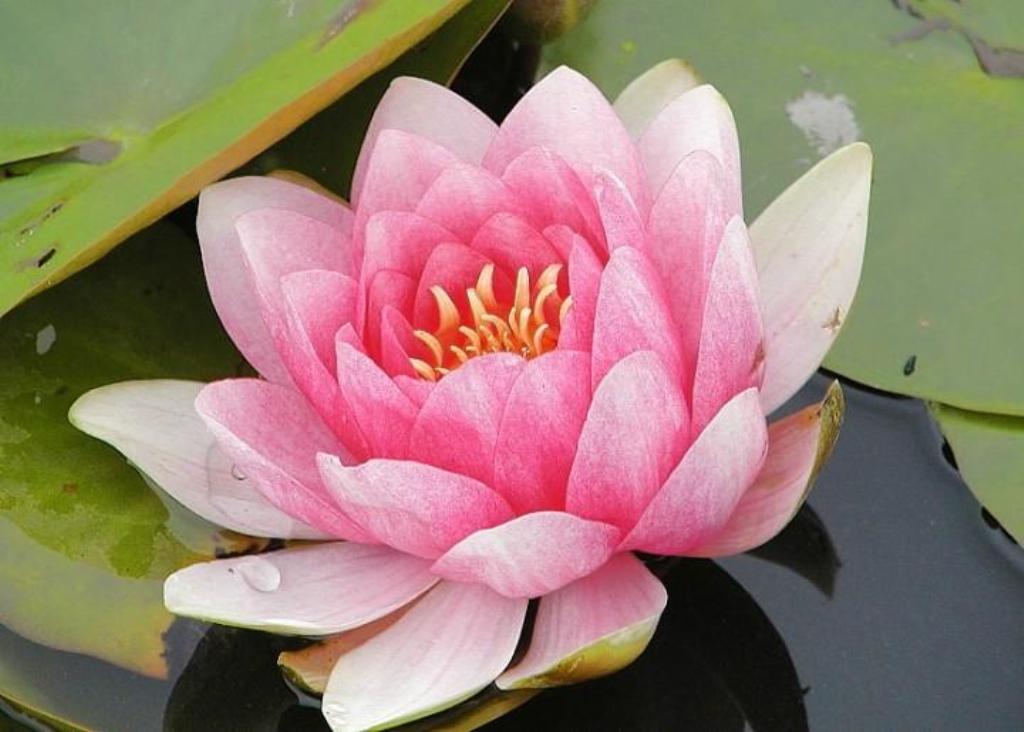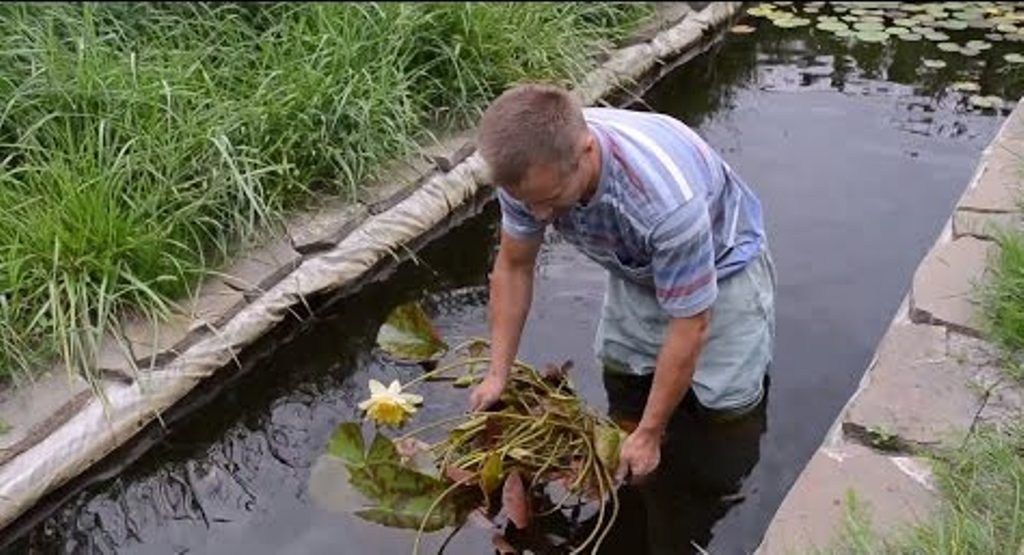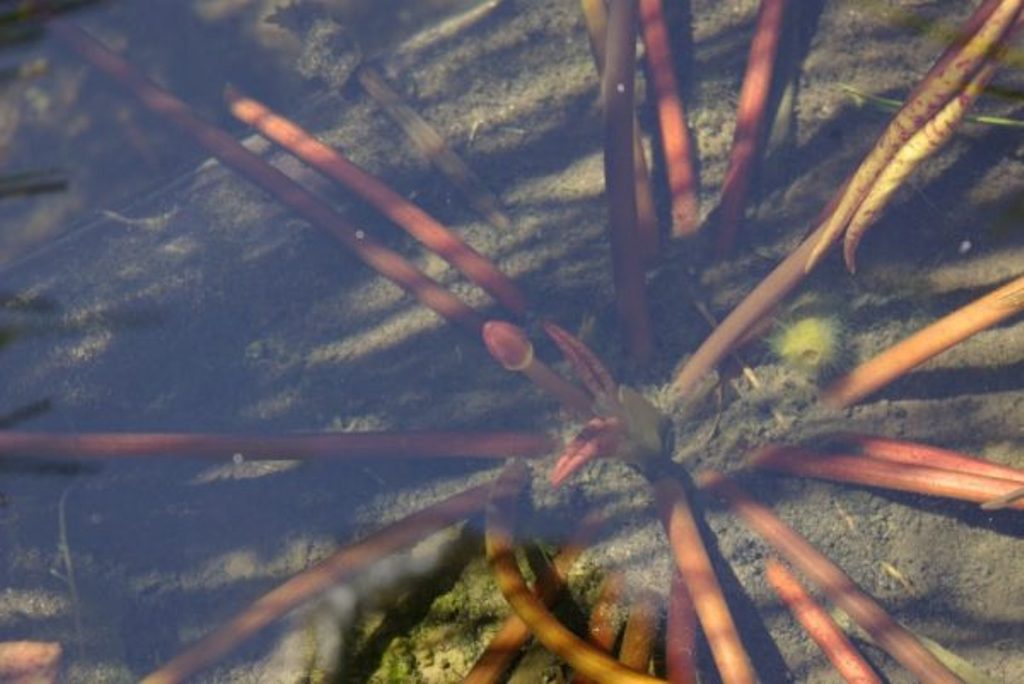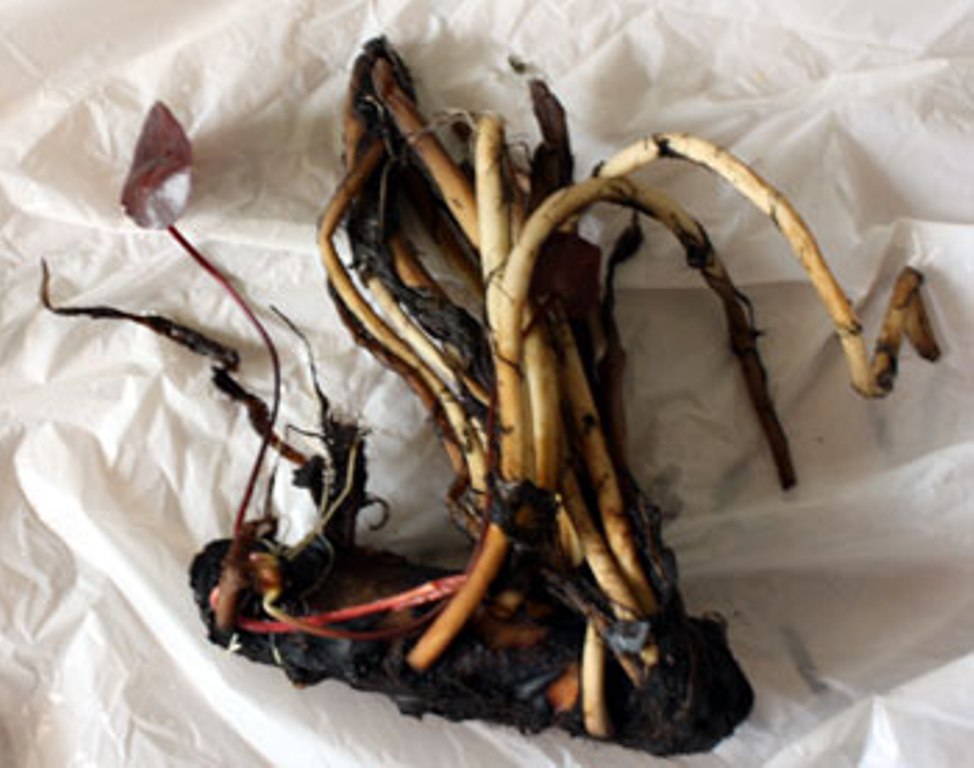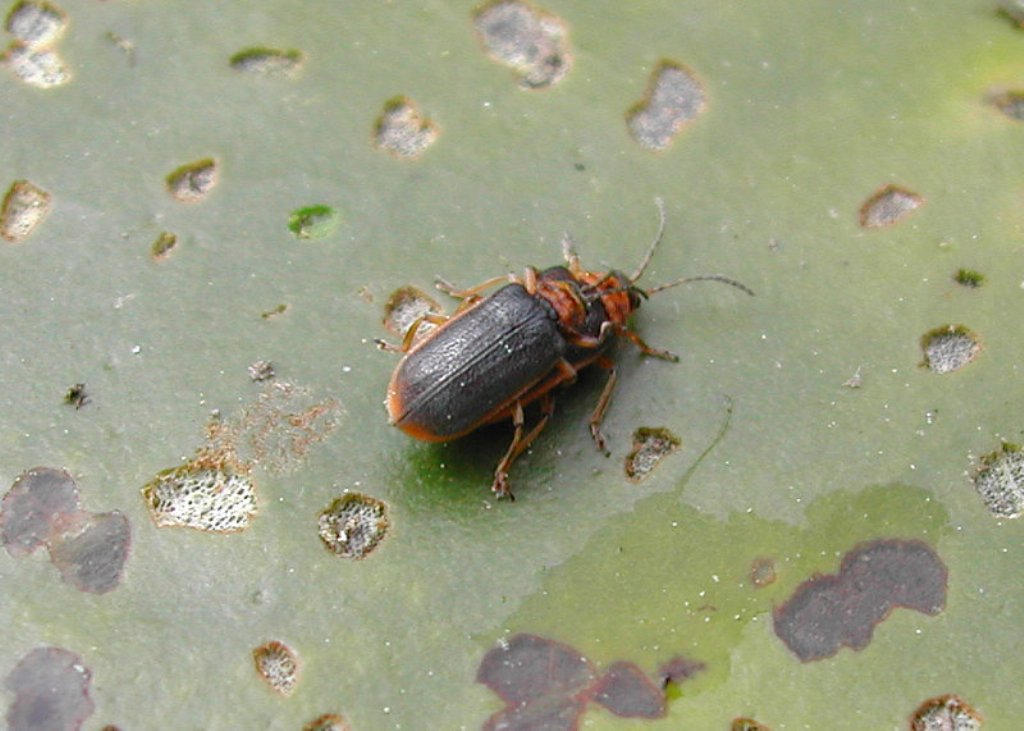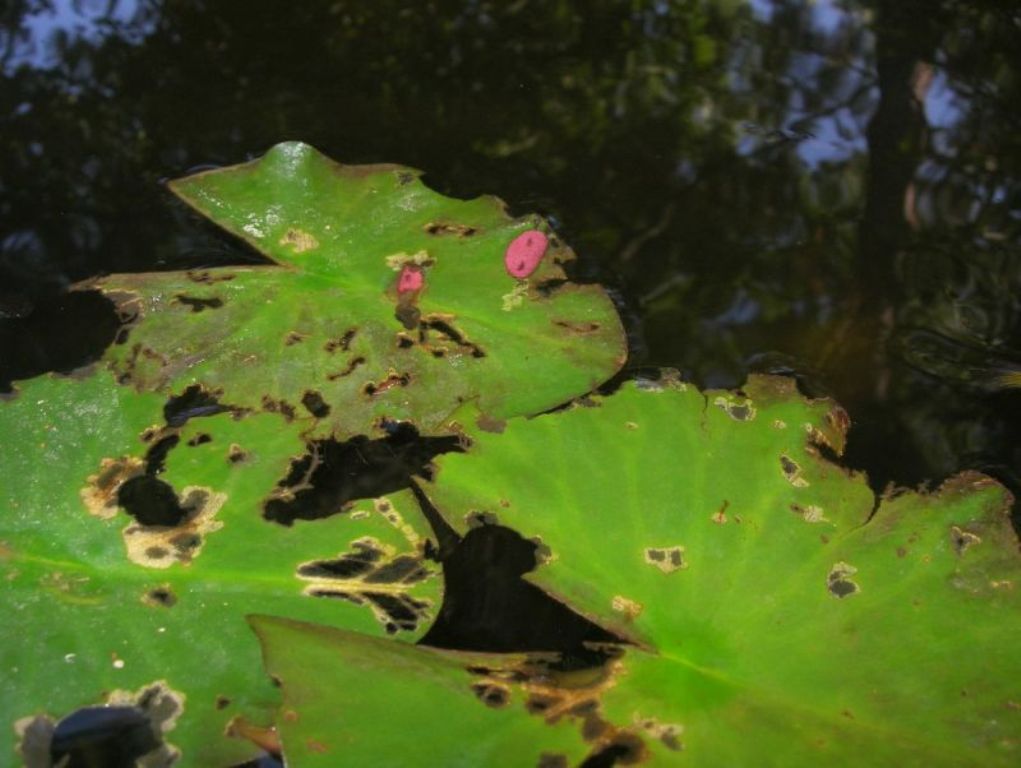When water lily blooms. Nymphi, Landing and Pond
Gentle, extraordinary beauty Flowers Nimifia are no longer uncommon for our dachans. Many are called their water lily or water lilies. Increasingly, these decorative plants are decorated with reservoirs, ponds on many household plots. Decorative pond with charming nymphs surrounded by leaves, which lie on the water stroit - a beautiful and unforgettable element landscape design. How to decorate a decorative reservoir nymphyma and how to properly care for an excellent plant?
Nymphia (Nymphaea) are rightfully considered "queens of water." This unique beautiful combating flower, about which legends and unusual stories are composed. Nymphi received its name in honor of the gentle female nitif - patrons of nature and water elements. The Slavic peoples of the waterway are associated with fabulous mermaids, and according to the Scandinavian legends, each water lily has its own elf, which is born and dies with the flower. Often about the nymphs mentioned in ancient Greek myths. Sometimes is sometimes called "Child of the Sun": her magnificent flowers are revealed in all its glory with the first sunny rays, and closes with the onset of twilight. Nymphi is a perennial grassy water plant with a powerful, fleshy rhizome, which consists of more than 50 species. In nature there are tropical and winter-hardy, adapted plants to our climatic conditions. Sprinkle with nymphy in flowing water bodies with slowly flowing water. The blooming nymph in northern latitudes begins in June, in the southern regions - in May. Beautiful tender flowers of white, yellow, pink, purple shades are open in the morning clock and close, falling into the water when the sun sits down. In cloudy rainy weather, the water lily may not appear on the surface of the water. The duration of flowering pita - up to 4 days, then the flower dies. The flower of water lily is a single, rigging, has a proper symmetrical shape. Flowers can be terry or semi-world. The flower diameter varies from 3 cm to 30 cm. In the center there are numerous stamens of large size, painted in yellow or orange. Nimifia exude a bright, attractive fragrance for numerous insects that pollinate it. Basic pollinators of water lily - beetles. If the beetle does not have time to fly from the bowl of the flower before its closure, it remains inside the pita and goes down with it under water, and in the morning it returns to the surface of the water.
On the water stroit there are surface leaves and flowers that look at their magnificence. The shape of the surface sheet plates is rounded, elliptical, with a pronounced recess. Leaves are dense, with a wax chain, thanks to which they do not wet. The dimensions and color of the surface foliage may differ depending on the type of plant. Decorative leaf leaves can be rich-green or light green, burgundy, motley. Elastic cutters of leaves, under the influence of wind or reservoir flow, are freely moving along the surface of the water. The length of the petioles depends on the depth of the pond and the water level in it.
The leaves underwater have another building: broad-chain, film, swollen cap, under which flower kidneys and emerging surface leaves are located. On the entire vegetative part of the aquatic plant there are aircraft channels that provide him with breathing and allow you to stay on the water. Nimfei: SortaTo decorate the decorative reservoir, the lines of different sizes are used, which are selected in the depths of their landing. Nymphi can be divided into three main groups. Nymphi dwarf. This is a miniature water lily with a flower in diameter from 3 to 15 cm. Plant landing depth - from 15 cm to 50 cm. You can buy dwarf nymphing for the pond in the store, for convenience, dwarf varieties mark the "Pigmea" marks. Among the popular varieties used for decorative reservoirs:
Nymphi is medium. The flower is larger, up to 18 cm. You can plant in a reservoir to 60 cm deep.
Nymphany is large. Flowers are large, reach in diameter up to 25 cm, you can land in a pond with a depth of 1 meter.
How to plant nymph in pondThe success of growing nymphy in the pond depends on high-quality landing. To plant plant, it will take a low wide container with drainage holes to allow rhizomet to grow and multiply. Small buckets are suitable for dwarf varieties for medium and large varieties - 10-12 liters buckets or other large containers. In addition, in flower shops you can purchase special baskets for landing nymph. Next, you need to prepare the land for landing nymph, the composition of the soil consists of:
All components need to mix well and put on the bottom of the container. For landing, the water lugs are recommended first to use humus, and then the soil mixture. The planting plant, rhizome needs to be positioned horizontally, directing the roots down, gradually sprinkling the earth and sealing them. The edge of the rhizoma, the opposite of the growing kidney, must be placed at the walls of the bucket, to give the root to grow freely. In order to prevent the soil flushing with water, a layer of pure sand is added from above and shallow stones or pebbles are put. Landing a pita nymph in the pondContainers with planted water lisms can be installed on the bottom of the reservoir to the optimal depth for them, considering what group they relate to. The depth of planting is calculated based on the surface of the soil in the container, and not from the bottom of the pond. It should be borne in mind that at a depth of water has a rather low temperature, as it is badly heated by the sun, the leaves and flower kidneys will be much more difficult to reach the surface of the reservoir. However, too small immersion of the tank with a jug is undesirable - the leaves and flowers of the nifia grow quite quickly and in a few days will turn out to be water. The blossoms of the nifia begin shortly after the landing.
Nymphi after shopping in the storeIf you decide to buy a beautiful nymph in the store, where it is sold in a special container, follow the following recommendations:
Nimfei: Pond CareCaring for nifries is not complicated, it is enough to remove dead flowers and yellowed leaves. It is worth noting that the pita lines very quickly grow on the surface of the pond. When the leaves close all the reservoir mirror, the flowers become smaller, less often bloom. Therefore, while planting water lilies in the reservoir, it is necessary to leave at least half the pond free and not to plant right away a large number of Plants. The prerequisite for the care of the pond is its spring cleaning, after wintering Nymphi. Capacity immersed in water must be removed and cleaned from organic garbage that focused foliage. Also, the pond should be cleaned of garbage and dead coastal plants. How to propagate the nymphayNimifia multiply rhizomes. In an adult plant, a rope root with a kidney is cut into a sharp knife. The location of the cut must be treated with crowded charcoal. A tunnel with a kidney plant in a container in the usual way to landing nymphov described above. It is less commonly used by a seed method of breeding - the seeds of the nymphy are put into the pot and lowered into the water. This method of reproduction is suitable for warm regions. Wintering nymphy in pondWinter-hardy nymphs grown in our region perfectly carry frosty winter, provided that their roots will not freeze in the waterstroke - under such conditions, the nymphy will die. If the pond is more than 50-60 cm depth - the nymphany perims perfectly, as it will not freeze the reservoir until the bottom. For reliability, the pond can be inspired by setting on the bottom of the board, foam layers or a double-layer of film.
It is possible to store the nymph in the winter and outside the container where it grew. To do this, remove the plant from the container, crop stems, leaves. In a polyethylene pack, filled with perlite or wet moss, put the rhizome water beauty and place it for the winter in the refrigerator, not forgetting to follow the moisture of the root.
Pests Nimfei.Nimifia almost never hurt. Possible difficulty with which you have to face the cultivation of nymph in a decorative pond - reinforce the roots. The reason for the rotation may be a fungal infection, which was infected with the root when buying, as well as the appearance of poisonous substances in the reservoir. Disease prevention - buying a healthy plant and timely breaking of Nymphin.
Beautiful, widely opened nymphy flowers surrounded by floating leaves in the pond - fascinate and admire everyone around. Pond with water lilys in the garden - garden decoration and pride of any dachank. Observing all the rules of landing and wintering nymphi, you can enjoy their beauty for many years. |
For subsidiaries, on the site of which there is an artificial reservoir is always relevant to the problem of its design. Artificial fog, the backlight of the water and the coastline is everything wonderful, but you should not forget for what, in fact, a man-made pond was satisfied. And he was made in order to create the illusion of proximity to natural nature. So for artificial pond No better decoration than aquatic plants, such as a waterloss.
The waterway is the floating leaves of the rounded shape, which are connected to the bottom of the reservoir with long stiffs, as the ship connects with the seabed anchor. During the flowering period, beautiful flowers appear on the surface of the green sheet for which the color in bright gentle colors is characterized.
So that water pitches have successfully accumulated in your reservoir, you need to create appropriate conditions for them, and for this it will be necessary to get acquainted with the peculiarities of their development. For those who are ready for such difficulties, we are published by the website www.Site in general, we will talk about the basic rules for the breeding of this plant and the necessary care for it under artificial reservoir. Waterwear for the pond: how to plant - the topic of our article.

First of all, you need to choose from the available variety of varieties and types of water lugs that is the best of all suitable specifically for your reservoir. Here you need to take into account its middle depth and area of \u200b\u200bthe water surface. For ruined concrete reservoirs, the simple shape area is determined by the multiplication of the length of the width.
In the case of plastic forms for which the presence of bends and protrusions are characterized, to determine the area will have to carefully examine the passport details of the purchaacility. Deciding with a pond area, it is necessary to ask the standard dimensions of the sheets of the water pita striking.
Determining whether the variety is suitable for your reservoir, keep in mind that the total area of \u200b\u200bthe leaf of the pita should not exceed half the area of \u200b\u200bthe water surface of the pond. At the same time, do not forget that like any plant, the waterway will multiply and after a few years the place of one sheet will appear 2-3 of its fellow.
How to put a water jug?
Having bought a pitcher, try as quickly as possible to deliver it to the landing site - the plant is gentle and heavily tolerates long-term transportation. In order for the plant quickly and painlessly stuck, it needs a special nutritious substrate, so it is best to plant a pitiful in a special container in the form of a basket.
Depending on the grade of the pitcher, the preferred diameter of the container ranges from 45 to 60 cm. Height In this case, there must be at least 25 cm in any case.
So that the nutrient substrate does not erode and do not clutter the water of the reservoir, the inner surface of the container before filling is covered with underfloor material.
A special container can be replaced by an ordinary plastic pot, but for this you will have to do additional holes in it.
The basis of the landing substrate for waterway It serves clay and peat mixed in 2 to 1, respectively. To increase the nutrition of the soil, organic fertilizers add to it - the best manure is best.
Landing the wipes passes as follows. First, the container is filled with a substrate on 2/3 of its height. Then the plant is placed in it and put it with its remaining substrate, just enough to hide the rhizome. The remaining free part of the container is filled with gravel, the layer of which will protect the root system from the detonation and ascembly.
Before immersion of the finished container, its contents need to be moistened, richly spilling with water. Immediately immerse the plant on a greater depth. It is possible to increase the depth of the depth as a walker grows if the petiole stops to be smooth and start being bent - it means to change the depth.
A special question is wintering water lily. Winter-hardy varieties can remain in the pond, but the depth of their occurrence should be at least 60 cm. The plants of thermal-loving varieties are covered out of the water along with the container, which is put on the board, the pits need a depth of 0.5 m. The root is covered with a rubberoid and the earth falls asleep.
You have already been converted, but your hands still scratch and the soul do not want peace, we offer you another lesson: set in your pond of pita. Their disembarka, as well, and the transplantation can be engaged from May to September. And now the gardeners have the latest opportunity this year to add beauty to the water elements of the landscape.
Skeptic readers who are confident that the nymphs do not tolerate cold, declare: World Botany stepped far ahead and today in the market you can easily find excellent winter-hardy varieties that are quietly coming up in the European part of Russia and Siberia. Their flowers and the leaves are not inferior to the "summer" fellows. Even on the contrary, sometimes you won this dispute. As a visual example, we publish a selection of photos of the most popular winter-hardy varieties of Namphi.
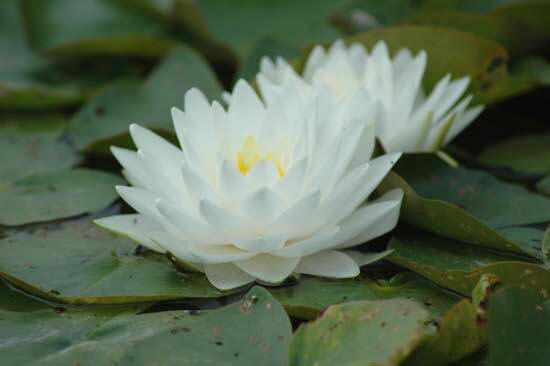
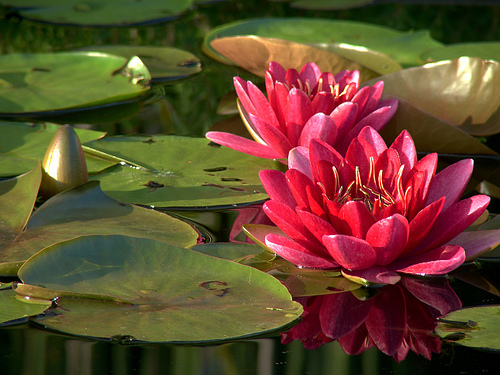
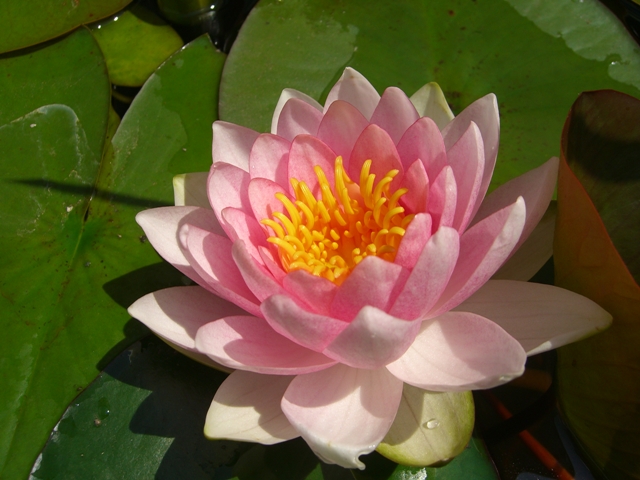
The thing is that winter pitches - mostly hybrid species, which means, different varieties can please the eyes with flowers in the shades of yellow and pink, and leaves from classic green, to the motley with burgundy splashes. And another plus (non-uniform eye, but useful) is a compact rhizome, which is not sprawling throughout the water and allows you to plant the pita even in containers in small water bodies.
By the way, landing into the container, basket or box is one of the most convenient options. First, the plant is always easy and convenient to transfer to a new place, not alarming the roots. This means that you are a huge selection of songs with the participation of nymph, which you can make up your pond. Rearming the basket on the bottom, you can continue coastline, smash the reservoirs on the zones and even make a flowerbed in the center of the pond (but do not forget that the water lily loves the sun, and place it in the shade, for example, the coastal largest largests are not worth it). And secondly, if you still fear for your colors and decided to remove them for the winter, then the container landing will greatly facilitate this task.

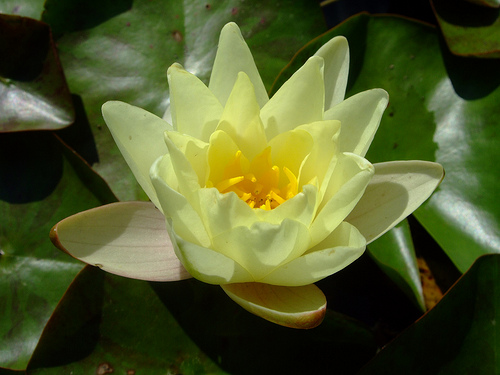
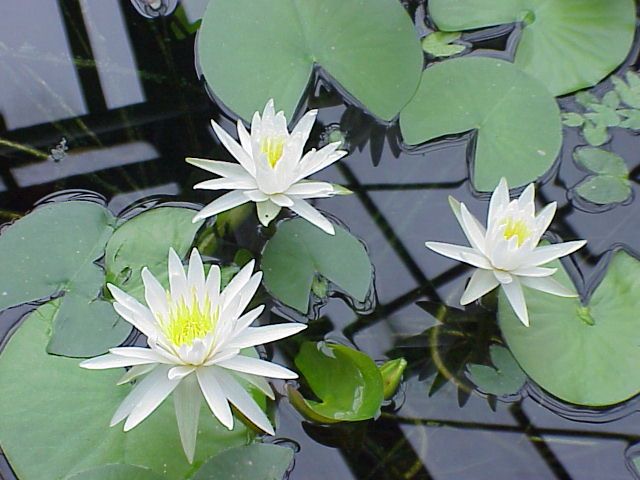
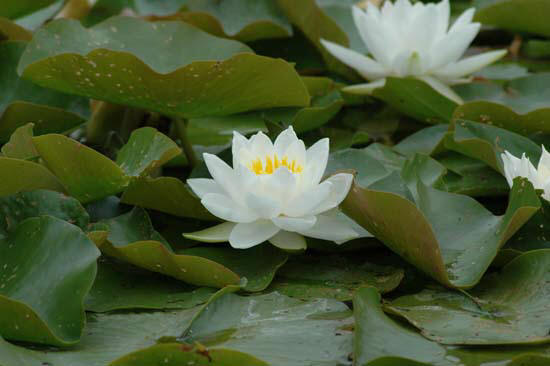
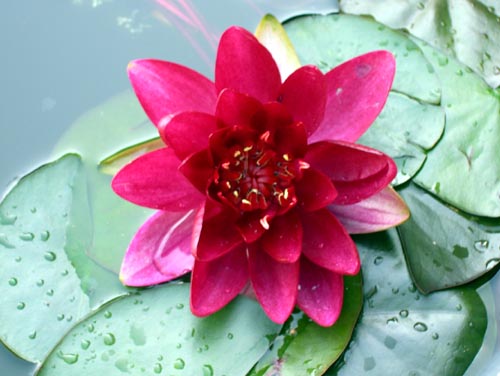
To make lips in containers feel comfortable, choose low, but wide containers in which there should be many drainage holes. From the inside the container must be put on the burlap so that the ground is not washed out of time. Another advice on the boxes for nymphi is already purely aesthetic - use dark tones containers. Then they will not be noticeable and do not distract attention from colors.
After selecting the container time to prepare the soil. For planting water lily, a mixture of compost, ordinary garden land and large sand is perfect. It is not bad to add to it and a little bone flour that works like a fertilizer for nymph. You can lay such fertilizer and about the reserve. To do this, during the landing under the roots, the water lirsts are placed on clay balls, which are sunk and bone flour. Such feeding will be consumed gradually and enough for it for a long time.
Now actually landing and installing the container in the pond. To make the plants well, you need to position the rhizomes correctly, that is, put them on the ground down the cord-like roots. Then the roots are sprinkled with a cooked substrate so that the pita could not be elapsed. The rhizomes themselves must oppose the soil so that the growth point remains open. The depth of immersion of the filled container must be chosen depending on the variety. For dwarf water lily, the distance from the kidneys to the edge of the water should be about 20 cm, but the strollery nymphs need to "draw" almost to a meter.

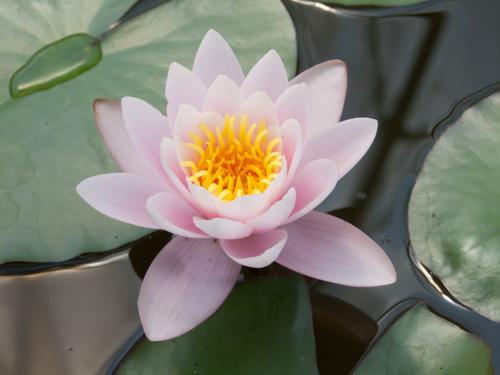

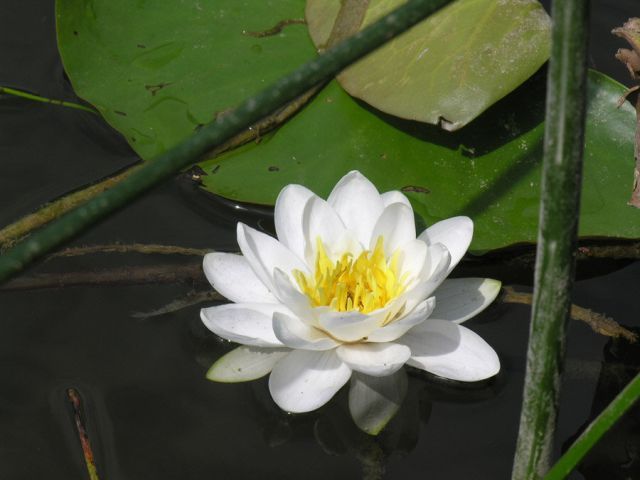
Using the depth adjustment, you can speed up the development of plants in the spring. While the pitches have not yet released the leaves, they can be moved to a smaller portion of the pond (about half the depth required for this variety), and when the first leaves appear - to return to the laid place. The released leaves after a few days will also appear on the surface.
We will talk about the surface of the reservoir. The pitches are quickly growing and covered with a pond mirror. But it's not worth glad. You can estimate the real beauty of these plants only if they are shaded by water. Therefore, landscape designers are recommended to leave free at least half of the reservoir. For the same reason, many nymphon in one pond should not be planted at once. They will quickly float it, and the leaves in the cramp will become small and no longer so spectacular. Agree to a 15-centimeter flower on a 25-centimeter sheet much more prettier than small flowers no more velhahatts on a leaf as if the linden. Another purely decorative advice: in one density group, Nymfe is best to combine the same variety color. If you want to put the pitches of different tones, it is better to divide them by a water stroit.
We have practically not written anything about the current care. But he is nimphounds and is not required. At the beginning of the season, the plants can be filled with clay balls with bone flour (the same as when landing). They must be embedded in the ground next to the roots. And as the pond will remove old flowers and leaves. The rest of the pita is very independent and they are not terrible diseases and pests. Is that in dry years on water flowers can be afraid, but she also affects the overall health of the nymphs.
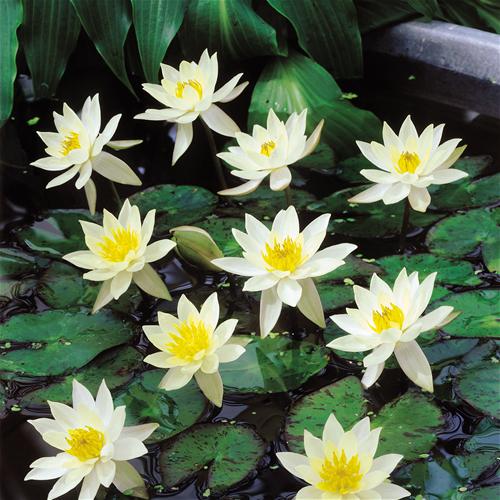
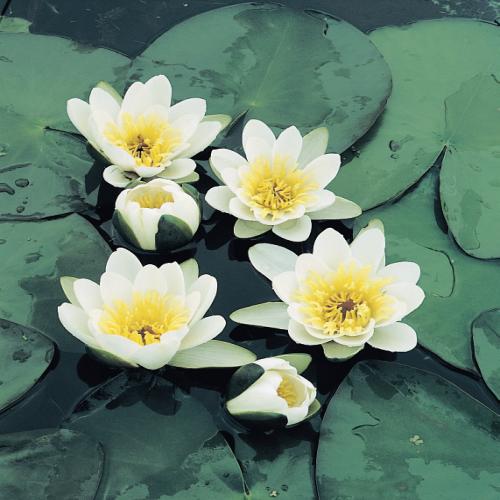
![]()


This is what it is worth saying is about the reproduction of water lishes. In the middle lane of Russia, only one option is possible - rhizomes. To do this, cut off in an adult plant, any area of \u200b\u200brhizomes with kidney and as soon as possible to plant according to the rules described above. In an adult plant, the location of the cut must be poured with pilent wood coal. If the climate in your area is warm, then you can dilute the nymphy and seeds. They are put in pots or containers and lowered into the water.
And last: since we are approaching winter, we will tell how to help the water lilies to transfer the cold (read also the article "Pond in the Dacha: Autumn, Winter, Spring"). We have already said that many varieties are calmly winter in reservoirs. But for this you need to comply with several conditions.
Nothing needs to be done if your reservoir is more than 60 cm. Such ponds are rarely freezing to the bottom, and the nymphs are transferred to the cold without problems. If the pond is smaller, but the bottom of him is natural, you can dig in it about 50 cm deep in it, move containers with plants into it for winter, and fall asleep with soil to spring. But if you have a petty reservoir, and the bowl of his plastic or concrete, which will not allow to deepen in the bottom, it will still have to pull out containers on land, crop leaves and flowers, and then put on the wintering basement with low, but still plus temperatures .
Dear visitors, we also recommend you to read the articles of "Plants for the Pond", "Fish in Pruh" and see video about landing nymph in pond.
Click "I like" and share with friends on social networks! Thank you!
Water plants for the pond are a group of representatives of the Flora, which can grow in the thickness of water. Use aquatic plants for an artificial pond can be in any climatic conditions. To do this, it is necessary to select the varieties and types. On this page you can read a description of some species, see photos of aquatic plants. Thanks to the knowledge gained, you can pick up suitable aquatic plants for landscaping the pond in its area.
These plants adorning the surface of water by floating leaves and beautiful flowers, have a root system in the ground at the bottom of the reservoir, their leaves rise to the surface of the water with long stuffs. Decoring the water surface, do not forget that at least 40% of it should be freely, the sunlight should penetrate into the thickness of the water, so do not sit too much, otherwise in a couple of years, one memory will remain from the water, and this is not only wrong, but also ugly .
Plants and flowers of nymphias for the pond and their photos
The most famous plants of this group are nymphi pita. To date, they are easy to acquire, specialized firms supply from European nurseries a very diverse range of their range.
Look at the nymphi plant in the photo, where various stages of development and flowering are shown:
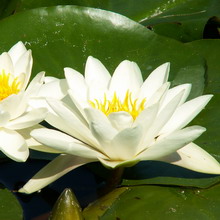 |
 |
|
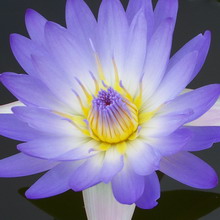 |
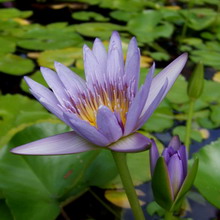 |
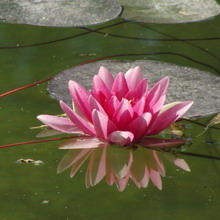 |
Plant Nonphus, or Sweatshirts (NYMPHAEA)- one of the most beautiful creatures of nature and man. The varieties of cold-resistant water lishes differ in size and color, degree of terrain and flavor of flowers, shape and painting leaves. Successful bloom depends largely on the water temperature in the pond, the volume of the soil in which they grow, and its nutritionality.
All the flowers of the nifia are divided into 3 groups: small and dwarf, medium and large. Small and dwarfs nimifia for the pond are best developed at a depth of 20-40 cm, the average - 60-80 cm, and the depth of 80-100 cm is needed.
Landing nimfei and caring for it: video and description
The depth of landing the nymphi for the care of the plant is the distance between the surface of the water and the growth point of the nymphy. Landing the nifia and plant care requires certain skills and knowledge. Most varieties of the Namfey winter perfectly and richly flowers at a depth of 60-80 cm, the dwarfs can not be squeezed to be deeper than 40 cm - they will simply do not survive, the largest in the insufficient depth is violently vegetate to the detriment of flowering. At a depth of more than 1.5 m, varietal nymphs will not be able to grow normally and blossom, will slowly develop and gradually die. In this regard, natural species, such as white water lily (N. Alba) and fragrant (N. odorata), which grow equally well, flower and winter at a depth and 40 cm, and 2 m, but blooming is not so long as varietal . All the pitchers usually begin blooming in June - early July, but the varieties bloom to sustainable colds (until September - October), and species - only until the end of August. Nymphi should be lit by the sun at least 5 hours a day.
To understand this process, look at the nymphy on the video, in which the entire description of the landing and care procedure is clearly shown:
Flower water lily water lily and her photo
All cold-resistant water lilies are absolutely resistant and winter-hardy in the middle strip of Russia, which cannot be said about the varieties of water lisms, in the pedigree of which there are tropical blood.
They can be distinguished from cold-resistant signs:
- in tropical water lilies, the jugs brown round tubers with a small potato, in winter-hardy, too brown, but more elongated;
- star flowers with severe crown of stamens, highly elevated above the water surface on durable stems;
- blue, blue and purple flowers and leaves with a strong edge.
![]()
Different groups of the nitfees form different leaves on the area on the water mirror: the miniature forms a stain from the leaves with a diameter of 0.5-1.2 m, the average size is 1.2-1.5 m, large - 1.5-2.5 m.
Available Flower Water lily with white, pink, red, yellow and orange-yellow flowers. Varieties with dark red, almost black flowers, as well as with double flowers are much more expensive and capricious.
See Flowers Water Lilies in the photo, which show various varieties and types:
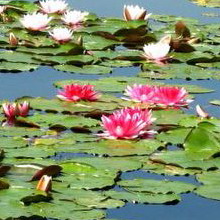 |
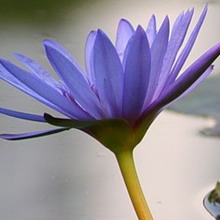 |
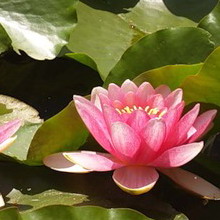 |
 |
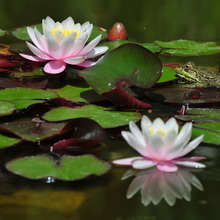 |
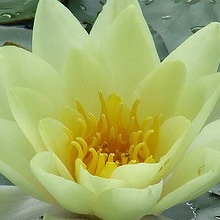 |
Water lilies: landing and care
Landing and care for water lilies should be carried out according to certain rules that are described below. Often, special mesh or any other plastic containers are used for planting aquatic lilies, which are noticeable in water, they must be masked with soil, sand, gravel or pebbles. Aquatic plants develop quickly, at least once every two or three years need to share and replant, it is better to immediately make a larger with a larger and plant plants directly into the soil, fastened over waterproofing. It is advisable to use containers only for landing dwarf water lishes, which should grow at a depth of only 20-40 cm, on which to leave them risky risky. With the onset of sustainable colds of the container with dwarf and thermal-loving plants, it is necessary to raise out of the water and determine for wintering: to a greater depth of the pond, in the cellar or to go to garden Grokes. In most cases, there is no need to cultivate aquatic plants in containers.
Indian Cannes
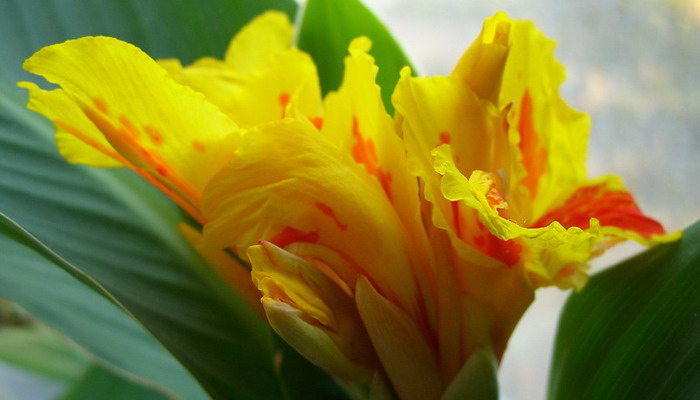
Stunningly looks in the water flowering Cannes Indian - decorative and leaves, and lush flowers. The land canne must first grow to a height of 15-20 cm, and only then it is planted into the water, otherwise it rotates. Cannes in the reservoir bloom the whole season, giving tropical charm to the water garden, faded flowers need to trim.
These plants are not cold-resistant, they are cleaned about the winter to the basement (sometimes they winter around the balcony door or on a staircase), cutting off the stalk at an altitude of 10 cm. Rhizomes with a lore of the earth are placed in boxes and fall asleep or peat with sand. During storage, they support the small moisture content of the Earth, periodically examining the rhizomes. If it appeared rot, it is removed to a healthy tissue, sprinkling the location of the cutting of coal or ash. In March, the rhizomes are divided into the number of young sprouts and plant to grow.
Sit at the beginning of the middle of June after the end of frosts, then Cannes will bloom in July.
More recently, the bright flowers of the nifia were a raininess in our gardens. One of the main questions that the gardeners took care of, was wintering this stunning flower in its beauty. If you have not yet decided on the cultivation of the nymphs in your garden, it is definitely worth trying.
How to arrange a water
Gardening pond is a special effort object and a separate concern. Dragonflies and frogs themselves will populate a new reservoir. But without the participation of a person in the gardening of the pond, he will not be able to take a worthy place in the design of the garden.
In order for the pond harmoniously fit into existing garden compositions, it is necessary to create smooth transitions from adjacent flower beds to its coastal vegetation. And the most favorable time for this will be spring. Before decommissioning with water, wait until the water fears and warms up to work in it it was comfortable. In addition, distribute your future landings in advance, since aquatic plants have a tendency to quickly grow up and in a few years your pond will not be visible due to the riveted coastal thickets. The universal rule is: on one square meter of the square should be placed no more than two or three plants.
All water crops can be divided into two large groups - coastal and deep-sea. The queen of deep-water plants can confidently be considered Nymifea (Nymfaea). In European culture, this beauty has long been an integral part of anyone, even the smallest pond.
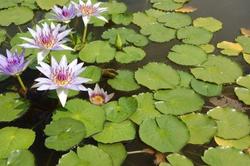 Thanks to the works of the French enthusiast, Joseph Bory Latour Marliac (Joseph Bory Latour Marliac), who got carried away aquatic plants And he put himself the goal to create bright cool-resistant varieties of water lily. During his life, Mr. Marliak created at least 66 varieties of water lishes, which are still cultivated worldwide. These varieties were obtained by crossing bright colorful thermo-loving species with modest, but endless and winter-hardy northern waterways.
Thanks to the works of the French enthusiast, Joseph Bory Latour Marliac (Joseph Bory Latour Marliac), who got carried away aquatic plants And he put himself the goal to create bright cool-resistant varieties of water lily. During his life, Mr. Marliak created at least 66 varieties of water lishes, which are still cultivated worldwide. These varieties were obtained by crossing bright colorful thermo-loving species with modest, but endless and winter-hardy northern waterways.
We choose the variety of water lily
Choosing a variety of plants for your reservoir, you need to know which group of niffees it applies. It depends on the size of the plants. To know the depth of disembarking of one or another nymphs is necessary in order to calculate how many and which plants can be stated in the reservoir. For the pond look beautiful, the pita should cover no more than half of its square.
Sorts and varieties of Nyphfe:
dwarf and small - flower diameter 5-15 cm, planting depth from 10-15 to 50 cm;
the average - the diameter of the flowers is 15-18 cm, the depth of water is 30-60 cm;
large - flowers with a diameter of 18-25 cm, the depth of planting is 50-100 cm.
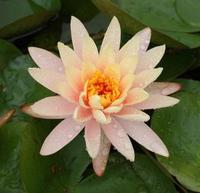 Dwarf varieties of the nymphs can be easily found on sale. In their name, the Pigmey's prefix is \u200b\u200boften found. This is, above all, N.pygmaea "Alba" with white flowers and N. Pygmaea "Rubra" With dark red coloring petals. Grade chameleon "Aurora" From creamy yellow gradually goes into orange. Unfortunately, in our cold climate it blooms little. Good I. N.pygmaea "Helvola", With her little semi-world flowers of cream and yellow colors. It is also suitable for small reservoirs.
Dwarf varieties of the nymphs can be easily found on sale. In their name, the Pigmey's prefix is \u200b\u200boften found. This is, above all, N.pygmaea "Alba" with white flowers and N. Pygmaea "Rubra" With dark red coloring petals. Grade chameleon "Aurora" From creamy yellow gradually goes into orange. Unfortunately, in our cold climate it blooms little. Good I. N.pygmaea "Helvola", With her little semi-world flowers of cream and yellow colors. It is also suitable for small reservoirs.
For medium-sized ponds, you can recommend a popular variety "Rose Arey" With flowers 12-15 cm in diameter. Its feature is the gradual fading of petals in the sun. As a result, in the pond simultaneously flows and gently pink and almost white pita. This is one of the most stable and regular-blooming varieties, width growth is limited in a diameter of about 80-100 cm. Adult plants grade Attraction Have a large star red flowers with white specks. And the young are characterized by flowers of a smaller size of a cupid shape and a pale pink color. Variety Gonnere. It has white, extraordinarily terry flowers. Slow growing plants makes it suitable for most reservoirs.
For large and deep ponds, you can recommend a strong dealer variety N. marliacea "Chromatella". It has a light yellow tinge of petals, it blooms plentifully and the best among yellow varieties is growing in a half. This plant is suitable for ponds up to 1.5 m depth. Put a couple of bright crimson "Escarboucle", with huge flowers that are in no hurry to close in the evening. Or intensively cherry James Brydon. Which has terry and compact flowers with rounded petals. Marliacea Albida. You will delight you with fragrant cupid white flowers with yellow stamens. Young leaves have a bronze tint, and over time they become dark green. May grow at a depth of about 2 meters.
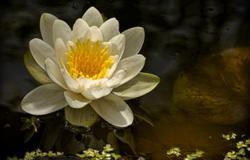 Nymphi Care and Landing
Nymphi Care and Landing
Successful cultivation of the nifia begins with competent landing. Select a low but wide capacity, with a large amount of drainage holes. In such conditions, the rhizome is freight and is multiplied faster. It is better if your basket is dark, since with transparent water they will attract less attention to themselves. When landing, pay attention to how your pet grew. If its rhizer was located vertically, try to provide her for the same position and in a new place. If the tuber with the roots lay horizontally, put it and pour it on top of the earth, not blocking the kidneys with new leaves. Otherwise, the water lily will graze and can die.
When landing nymphis it is worth using a clayey earthy mixture with sand and a little ordinary garden soil. I mix the composition based on the calculation 2: 1: 1. Il from the bottom of the nearest reservoir is also suitable, but only if there are no collective farm fields nearby, from where the remains of gasoline or harmful fertilizers can enter the water. I often meet the recommendations to add special pond fertilizers to the mixture or bone flour. Probably, it is correct and useful for the plant, but I never met them on sale. I do not feed my plants, and they feel good and without mineral additives. If I really want, you can feed the plants with a simple mixture of "Kemira Universal" (up to 5 gr. For an adult plant) with the addition of a small amount of superphosphate, about 3-5 grams to the plant. All fertilizers are mixed with earth and water and brought to the consistency of sour cream. In such a mixture, the rhizomes of the lugs are planted, and on the surface of the soil, it is possible to scatter pebbles so that the soil is smaller than "flooded".
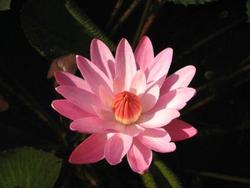 The raised and growing plants from the basket can be easily divided. The operation on the section is carried out like with the root of the iris, that is, a torn-knife is cut with a sharp knife. Separated plants are planted in different tanks and lowered into water. It is worth noting that the pitches grow very quickly, practically, like Iris. And if your pond is not large, the division operation will have to be performed once every 3-4 years.
The raised and growing plants from the basket can be easily divided. The operation on the section is carried out like with the root of the iris, that is, a torn-knife is cut with a sharp knife. Separated plants are planted in different tanks and lowered into water. It is worth noting that the pitches grow very quickly, practically, like Iris. And if your pond is not large, the division operation will have to be performed once every 3-4 years.
It is worth emphasizing that the pitches are quite quickly growing and covered with a mirror of a pond. However, along with water goes and real beauty These colors, as they are smaller, bloom becomes more and less, and instead of the water around the flower, new and old leaves are praying. Landscape designers are recommended to leave free at least half of the reservoir. For the same reason, many nymphon in one pond should not be planted at once. Finally, another designer reception in one density group Nymfe is best to combine the same variety color. If I want to plant the pita of different tones, it is better to divide them with a water stroit section. The rest, the care of nymphs is very simple. Once a few years, in mid-May, you need to get baskets with water lily from the pond and clean it from the leaves after the winter. A removal container with a plant is purified from false foliage and other organic garbage. The plants are then returned to the place. During the season, try to remove the yellowing leaves and the sworded buds.
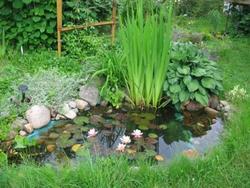 The spring cleaning of the pond necessarily includes the removal of all coughing and dead leaves at coastal plants: Kaluzhnitsa, Iris Airovoid, Aira and other ponds. It is best to do this when the water has already warmed up so much that households that you will attract to help in this difficult event were not selected from him subsequently. But all the spring work has time to start an active vegetation - the growth of leaves, so you will damage the plants less. However, in my experience, all of them are sufficiently unpretentious and even repeated transplants of a vegetative plant in one season from the pond in the pond and from the container in the container do not affect their external decorativeness.
The spring cleaning of the pond necessarily includes the removal of all coughing and dead leaves at coastal plants: Kaluzhnitsa, Iris Airovoid, Aira and other ponds. It is best to do this when the water has already warmed up so much that households that you will attract to help in this difficult event were not selected from him subsequently. But all the spring work has time to start an active vegetation - the growth of leaves, so you will damage the plants less. However, in my experience, all of them are sufficiently unpretentious and even repeated transplants of a vegetative plant in one season from the pond in the pond and from the container in the container do not affect their external decorativeness.
It's time for nymphi blossoms
Blooming the water lily starts very quickly. Even a tiny decene, planted in the spring, in May, in July, he threw her first flower upstairs in July and then bloom until the end of September.
My plants in film ponds are winter, at a depth of about 60 cm. In the harsh winter, the water in them freezes until the bottom, but there are no influences on the cold jugs. I have to resort only to one winter tricks: during arrival at the cottage, we are crushing excess snow from the trail and throw it on the pond. By the end of wintering over the reservoirs, a hill grows up, a height of about 1.5 m. With a total pond depth of 70 cm.
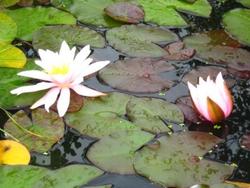 In addition to the pitchers, plants should necessarily grow in the deep part of the pond - hydroxy generators that produce oxygen under water and purifying a pond from ugly blue-green waterproofs and tines. In addition, they will serve food for fish. This group includes a water asterisk. (Callitriche Hermaphroditica), Turcha Bolotnaya HOTTONIA PALUSTRIS, Ugut Colosses (Myriophyllum spicatum) or rogolnik dark green (Ceratophyllum demersum). Gardeners advise the use of several types of hydroxy agents in one reservoir. At one time, I caught a few shoots of Uurati and Turchi in coastal zone Local lake and lowered them to the bottom. And now under water, whole colonies of these algae grow, serving the refuge for the surrounding frogs.
In addition to the pitchers, plants should necessarily grow in the deep part of the pond - hydroxy generators that produce oxygen under water and purifying a pond from ugly blue-green waterproofs and tines. In addition, they will serve food for fish. This group includes a water asterisk. (Callitriche Hermaphroditica), Turcha Bolotnaya HOTTONIA PALUSTRIS, Ugut Colosses (Myriophyllum spicatum) or rogolnik dark green (Ceratophyllum demersum). Gardeners advise the use of several types of hydroxy agents in one reservoir. At one time, I caught a few shoots of Uurati and Turchi in coastal zone Local lake and lowered them to the bottom. And now under water, whole colonies of these algae grow, serving the refuge for the surrounding frogs.
Plants in a small pond
For the shallow part of the pond, beautifully-flowing and well-known AIRs, white dealer, Susak, Kaluzhnitsa, some types of irises, for example, are suitable for the shallow part of the pond. Airovoid. With caution, the reed and rogo should be used, since they rapidly grow up and clog all other plants. The roots of most shallow water plants are and winter in the ground under water at a depth of no more than 40 cm, and most of the escape - above the water. These plants are unpretentious and can successfully grow not only in coastal zone Pond or stream, but also in a mini-reservoir depth of 5-10 cm. If you are maintained for them a constant humidity, then shallow perennials are successfully growing in a wetland zone lined with several centimeters above the water level. Most of them grow very quickly, so they are desirable to plant them in baskets.
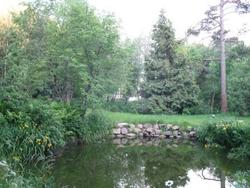 An even wider selection of marsh plants, which have a root neck and leaves rise above the water surface. Almost all of them can carry temporary flooding from time to time. Care for marsh plants as well as for garden. This group includes Volzhanka (Aruncus), astilby, meadowsweet. Perfectly feel in a swampy zone will be a variety of hosts, lotiblices, fern. If the place allows you to plant culture here with large strong leaves, such as rhubarb, Badan or a buznel. Very beautiful on the shore of the reservoirs, especially in the natural style of Wairay Fern.
An even wider selection of marsh plants, which have a root neck and leaves rise above the water surface. Almost all of them can carry temporary flooding from time to time. Care for marsh plants as well as for garden. This group includes Volzhanka (Aruncus), astilby, meadowsweet. Perfectly feel in a swampy zone will be a variety of hosts, lotiblices, fern. If the place allows you to plant culture here with large strong leaves, such as rhubarb, Badan or a buznel. Very beautiful on the shore of the reservoirs, especially in the natural style of Wairay Fern.
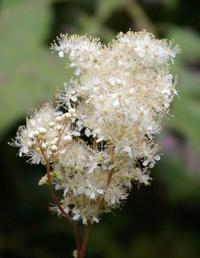 The principles of placing coastal plants are the same as when forming a flower garden - in color contrast and form. For example, the slender swords of the Bolotnaya iris emphasize the gentle openwork of fern and they are well contrast with splashing loytelies and tight horses.
The principles of placing coastal plants are the same as when forming a flower garden - in color contrast and form. For example, the slender swords of the Bolotnaya iris emphasize the gentle openwork of fern and they are well contrast with splashing loytelies and tight horses.
Text: Maria Karel
Zemladomer №4 (80), 2013
